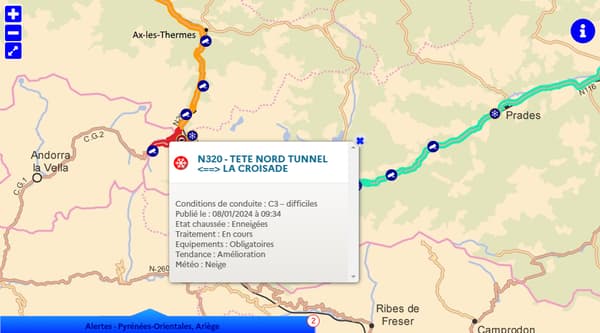With temperatures dropping sharply this week in France, you need to be extra vigilant before hitting the road.
Therefore, it is recommended to carefully check your vehicle’s levels (especially oil and windshield washer fluid), tire pressure, lighting, proper functioning of the ventilation and heating, and the good condition of the battery. On board you should carry high visibility vests and a warning triangle, chain or special equipment if you go through mountain areas (especially if you are not equipped with winter tires) and a squeegee for the windshield.
The smart winter bison
Before leaving, you can check the weather forecasts, in our BFM Météo section, with a space dedicated to snow, or on the French meteorological site, for example, but also the state of the roads, with the “roads in winter” service ” offered by Bison Futé from November 15 to March 15.

This page provides road passability information using a 4-color code that tells users how to adapt their route and driving based on reported difficulties. It is possible to zoom in on the different massifs to see the state of the road more precisely or view the images from the cameras.
A 4 color code, from green to black.
- In green, Driving conditions are normal on these roads, although of course caution is required.
- In yellow, Conditions become delicate due to the possible presence of patches of ice or snow. Drivers are advised to reduce speed and use extreme caution. The distance between vehicles should be increased and winter tires are recommended. The risk of road blockages is low for light vehicles, but possible for heavy vehicles. The map also indicates tonnage limitations on the affected axles.

- In red, Conditions are difficult due to icy or snowy roads. Drivers must wear winter equipment appropriate to these conditions. Otherwise, it is preferable to postpone the trip, with a high risk of blocking the road.
- Lastly, in blackDriving conditions are judged “impassable”: drivers cannot drive and roads are closed.
Source: BFM TV

